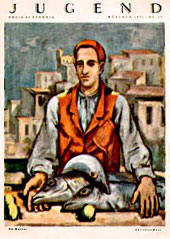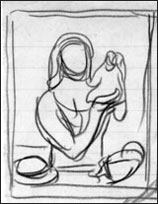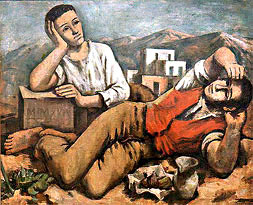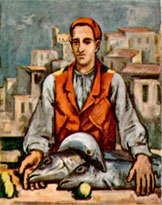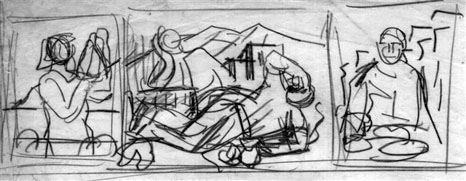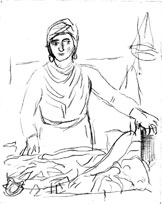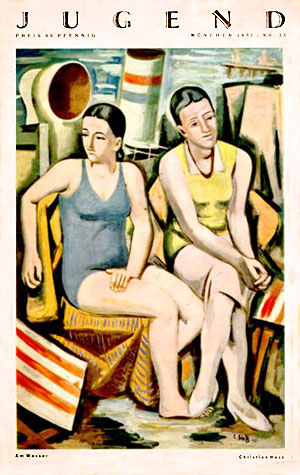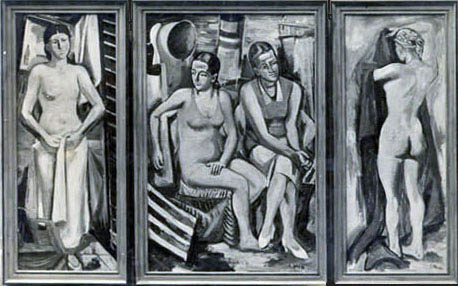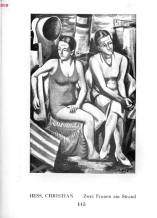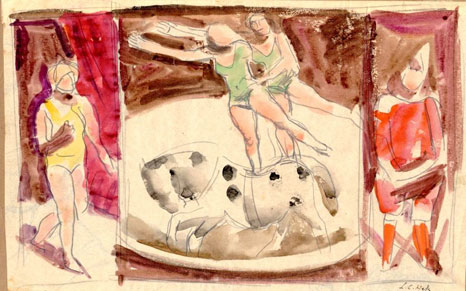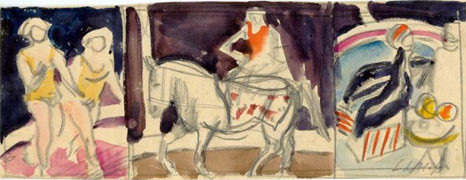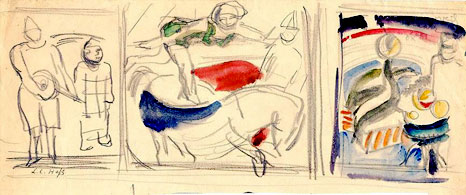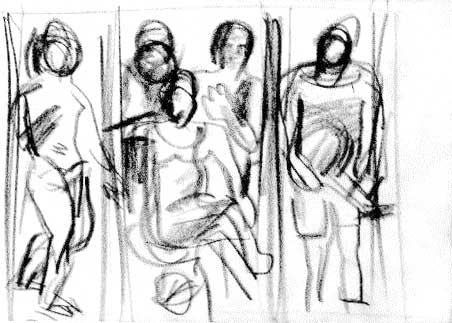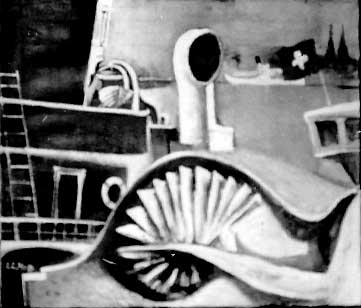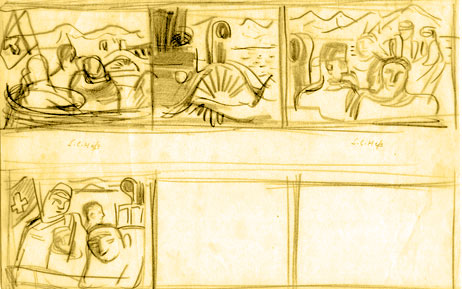|
Themes with three pictorial arrangements |
|
(dma) - In the 1920‘s and 1930‘s in Germany – as in the rest of Europe for that matter – the painting of triptychs had become a rarity, except for a handful of artists such as Otto Dix, George Grosz and Max Beckmann. Like his contemporaries in the German artworld between the Wars, Louis Christian Hess was particularly fond of developing and arranging his themes in the three phases of a triptych. Documentary evidence shows there were at least two Secession exhibitions in Munich, in 1929 and 1931, where Hess presented triptychs – both of which received the honour of being featured on the cover of the cultural magazine Jugend. Judging from the many sketches and preparatory studies which Hess left with his sister Emma in Sicily he often prefigured three complete works on given themes. The works would be individual and independent of each other but linked by certain affinities. Although with so many of his works so widely dispersed it is difficult to form an overall conception of his œuvre, nevertheless Hess‘ eclectic creativity clearly emerges, showing all its strength and multiform versatility. |
||||||||||||
|
A triptych from 1929 depicting scenes from life in Sicily |
||||||||||||
|
||||||||||||
